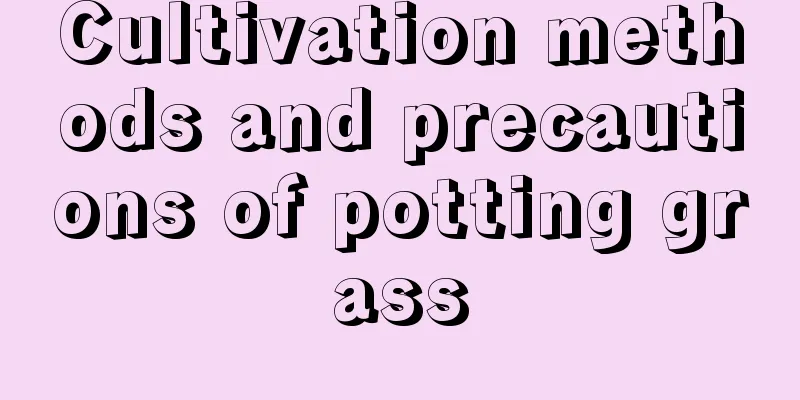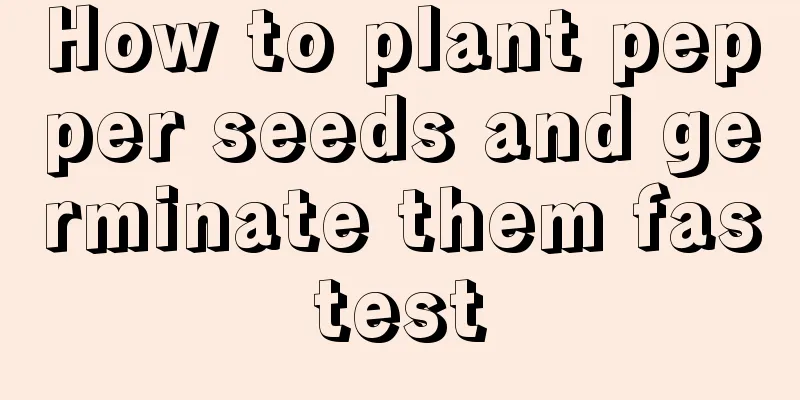Cultivation methods and precautions of potting grass

1. Maintenance methods1. Temperature: It has relatively high requirements on the temperature of the maintenance environment. The best maintenance environment is between 20 and 28 degrees. If the temperature is too low, it will cause it to grow slowly. If the temperature is above 30 degrees, the plant will also grow slowly. 2. Watering: During the growth period, it has a relatively large demand for water, but its roots are not tolerant to waterlogging. Therefore, you need to be careful when watering and make sure there is no water accumulation in the pot. When watering it, you should follow the "water thoroughly when dry" watering method. According to experience, it usually needs to be watered two or three times a week. 3. Fertilization: As mentioned above, it is relatively tolerant to barrenness, so the demand for nutrients is not high. During the growing period, you can decide whether top dressing is needed based on its growth status. If top dressing is needed, the minimum interval is once a month. 4. Light: It needs to grow in an environment with plenty of sunlight. If it is a plant grown indoors, it is best to place it in a sunny place so that it can receive sufficient light. If it is maintained in the open field, it can receive full-day sunlight without the need for manual adjustment. 2. Breeding techniques1. Repotting: It grows very fast and can easily overflow the pot, so you need to repot it every once in a while. If it grows too densely, you can divide it into several pots when repotting. Its roots are very fragile and easy to break, so you need to be very careful when repotting. 2. Pruning: During the growing period, the leaves at the base of the plant will fall off, but the stems will be exposed. Pruning is needed at this time to promote branch growth. Do not throw away the cut stems and leaves, as they can be used as cutting materials. 3. Problem Diagnosis1. Drooping leaves: The problem of drooping leaves is mostly caused by insufficient light. Plants grown at home need to be rotated frequently to ensure that every angle of the plant is exposed to the sun. 2. Root rot: It has root rot. It is probably caused by improper watering. If you water too much, water will accumulate in the plant's pot, which will affect the plant's breathing and cause the roots to rot. To solve this problem, you first need to dig it out of the pot, trim off the rotten roots, disinfect the cut, and then replant it in new potting soil. IV. Other issues1. Edibility: It is not edible. 2. Toxicity: The plant itself is non-toxic, but the juice can easily cause allergies. People with a history of allergies should be careful during maintenance to avoid contact with the juice. |
<<: Breeding methods and precautions of black plum
>>: Cultivation methods and precautions of rowan
Recommend
Does Chlorophytum prefer acidity or alkalinity? What are its requirements for soil?
1. Do you prefer acid or alkaline? It does not ha...
How to grow new jade ornamental indoors in summer
1. Adjust the temperature The temperature in summ...
The rarest vegetables in the world
Rare vegetables have higher nutritional value tha...
Do blueberry trees like sunlight? What are the light requirements for growth?
Do blueberry trees like sunlight? The blueberry t...
What fertilizer should be used to make peaches big and sweet?
Peaches are a kind of fruit that many friends lov...
The pros and cons of Shakespeare 2000 Rose
Shakespeare 2000 rose is a variety bred by David ...
Petunia video: One small seed can grow a large pot of petunias
Petunia sowing video Steps for propagating petuni...
Things to note when repotting Clivia, when to water after repotting Clivia
1. Notes 1. Time: The choice of time to repot is ...
How to grow succulent hibiscus snow lotus
1. Sunlight Our little succulent is a plant that ...
What kind of tree is good for Feng Shui behind the house (What kind of tree is the most prosperous and feng shui in the courtyard)
According to the old proverb "Locust trees i...
Disease and insect pest control of iron chopsticks
1. Aphids Aphids are the most common pest and dis...
What to do if the leaves of the dragon beard tree turn yellow and dry
1. Reduce watering Reason: If you do not scientif...
How to grow indoor peace trees and precautions
Growth habits of peace lily The peace lily likes ...
What is the best fertilizer for wedding oil paintings?
Wedding Oil Painting Fertilizer Wedding oil paint...
What are the varieties of agave?
Gold Edge Tequila Golden-edged Agave is a typical...









